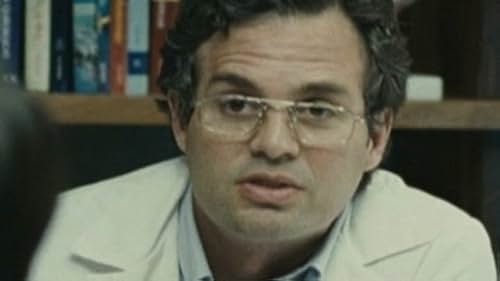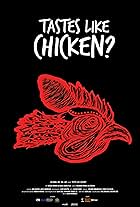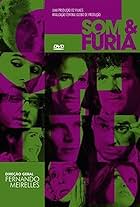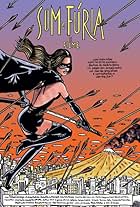A city is ravaged by an epidemic of instant white blindness.A city is ravaged by an epidemic of instant white blindness.A city is ravaged by an epidemic of instant white blindness.
- Awards
- 16 wins & 21 nominations
- Director
- Writers
- All cast & crew
- Production, box office & more at IMDbPro
Storyline
Did you know
- TriviaJosé Saramago, the author of the novel upon which the film is based, wanted to attend the premiere of the film at the Cannes Film Festival. His doctors didn't allow him to travel, so Fernando Meirelles flew to Lisbon, Portugal, to show him the film.
Saramago was ultimately enthusiastic about the film. He cried afterwards and told Meirelles that watching the film made him as happy as the day he finished the book.
- GoofsWhen the first blind man arrives home, he says he lives on the 14th floor. After his wife arrives you can see some trees through the kitchen window. Those trees should not be there.
- Quotes
King of Ward 3: I will not forget your voice!
Doctor's Wife: And I won't forget your face!
- ConnectionsFeatured in WatchMojo: Top 10 Movie Outbreaks (2014)
- SoundtracksSambolero
Written by Luiz Bonfá
Bonfá Music
Performed by Luiz Bonfá
From the recording entitled "Solo in Rio" SF 40483, provided courtesy of Smithsonian Folkways Recordings (c) 2005,
Used by permission
Featured review
n the land of the blind, only Julianne Moore can see. A weird malady has spread across an unnamed city that causes “white blindness” in the afflicted. Moore plays the wife of an eye doctor (Mark Ruffalo) who fakes having the disease so that she be quarantined with her husband (and the other early sufferers). The patients quickly learn that they’re on their own and that any attempts to leave the facility will result in their being shot to death. As the only sighted person, Moore literally sees the inmates/patients devolve into misery and must somehow lead a small band of them to the presumed safety of the outside world.
The movie begins rather strongly, as a young man is suddenly blinded while driving on a busy city street. Disoriented, he is helped by a passerby, who takes him home but steals his car. Meanwhile, an ophthalmologist’s office begins to fill up with people experiencing this odd blindness, not one of inky blackness but of complete whiteness. The following morning, the doctor wakes up with the same blindness, and the only way Mrs. Eye Doctor can go with him is by pretending she too has the (apparently) infectious disease.
The patients are kept in maximum-security barracks and are given sparse amounts of food that they must dole out to each other. But that’s the extent of their outside help; armed guards surround the buildings and shoot to kill anyone who tries to leave. (Lest they, you know, infect normal people.) So it’s not long before the denizens of one section (ward) decide they want more than their share, and anarchy ensues, which is compounded by nearly everyone’s lack of sight. (The doctor’s wife – everyone’s unnamed – keeps her own condition a secret from everyone except her husband.) The movie is a metaphor for the hatred within human beings for one another; it seeks to show that when the chips are down, we are just animals, even if we suffer the same indignities, because each of us wishes to be better than the next, to dominate. We are not, the movie argues, a society built solely on equality. It also seeks to show that there are different kinds of blindness: physical blindness, and the blindness of man to the suffering of his fellows.
Although the film is exquisitely well shot – from desolate city streets to the unencumbered chaos within the compound’s walls – it’s alternately slow moving and predictable. It’s easy to see what will happen once the victims are quarantined, and it’s even easier to see that the doctor’s wife will be the one to lead some of them out of the morass. Although Moore is excellent as always (as are Ruffalo, Danny Glover as an eye-patch-wearer, and Alice Braga as a blind hooker), her character seems to be less a victim and accidental leader than a chosen heroine, which runs contrary to the theme of everyday people simply trying to survive without sight. Moore’s character, the only character with sight, is presented as being a good person, but she is very slow to stop what are obviously Very Bad Things being done to the blind.
Aside from the blindness angle, there isn’t much here to separate this film from other personal-disaster films (to differentiate them from natural-disaster films, which would include earthquakes, tidal waves, and tornados), such as movies about plagues (28 Days Later), zombies (Dawn of the Dead), or infectious diseases (Outbreak). The idea that people would turn on each other even though they suffer together is not new; neither is the idea of a society (in this case, an entire city) abandoning those who all have some sort of disease. And because these ideas aren’t new, Blindness isn’t as compelling as it ought to be; the characters are generally one dimensional and unlikeable, so this isn’t even much of a feel-good movie. To tell the truth, it’s a bit of a lifeless downer, although the ending makes up for it a little.
A final note: The American Council of the Blind said, in deploring the movie, that “blind people do not behave like uncivilized, animalized creatures.” That’s simply a silly statement. Anyone can behave as an uncivilized, animalized creature, particularly if they are treated as animals and quarantined from “normal” society (which was the point of the director, Fernando Meirelles); to believe that blind people are not susceptible to anger, despair, and revenge is to believe that blindness somehow connotes angelic heroism, which is unfair toward blind people as well.
The movie begins rather strongly, as a young man is suddenly blinded while driving on a busy city street. Disoriented, he is helped by a passerby, who takes him home but steals his car. Meanwhile, an ophthalmologist’s office begins to fill up with people experiencing this odd blindness, not one of inky blackness but of complete whiteness. The following morning, the doctor wakes up with the same blindness, and the only way Mrs. Eye Doctor can go with him is by pretending she too has the (apparently) infectious disease.
The patients are kept in maximum-security barracks and are given sparse amounts of food that they must dole out to each other. But that’s the extent of their outside help; armed guards surround the buildings and shoot to kill anyone who tries to leave. (Lest they, you know, infect normal people.) So it’s not long before the denizens of one section (ward) decide they want more than their share, and anarchy ensues, which is compounded by nearly everyone’s lack of sight. (The doctor’s wife – everyone’s unnamed – keeps her own condition a secret from everyone except her husband.) The movie is a metaphor for the hatred within human beings for one another; it seeks to show that when the chips are down, we are just animals, even if we suffer the same indignities, because each of us wishes to be better than the next, to dominate. We are not, the movie argues, a society built solely on equality. It also seeks to show that there are different kinds of blindness: physical blindness, and the blindness of man to the suffering of his fellows.
Although the film is exquisitely well shot – from desolate city streets to the unencumbered chaos within the compound’s walls – it’s alternately slow moving and predictable. It’s easy to see what will happen once the victims are quarantined, and it’s even easier to see that the doctor’s wife will be the one to lead some of them out of the morass. Although Moore is excellent as always (as are Ruffalo, Danny Glover as an eye-patch-wearer, and Alice Braga as a blind hooker), her character seems to be less a victim and accidental leader than a chosen heroine, which runs contrary to the theme of everyday people simply trying to survive without sight. Moore’s character, the only character with sight, is presented as being a good person, but she is very slow to stop what are obviously Very Bad Things being done to the blind.
Aside from the blindness angle, there isn’t much here to separate this film from other personal-disaster films (to differentiate them from natural-disaster films, which would include earthquakes, tidal waves, and tornados), such as movies about plagues (28 Days Later), zombies (Dawn of the Dead), or infectious diseases (Outbreak). The idea that people would turn on each other even though they suffer together is not new; neither is the idea of a society (in this case, an entire city) abandoning those who all have some sort of disease. And because these ideas aren’t new, Blindness isn’t as compelling as it ought to be; the characters are generally one dimensional and unlikeable, so this isn’t even much of a feel-good movie. To tell the truth, it’s a bit of a lifeless downer, although the ending makes up for it a little.
A final note: The American Council of the Blind said, in deploring the movie, that “blind people do not behave like uncivilized, animalized creatures.” That’s simply a silly statement. Anyone can behave as an uncivilized, animalized creature, particularly if they are treated as animals and quarantined from “normal” society (which was the point of the director, Fernando Meirelles); to believe that blind people are not susceptible to anger, despair, and revenge is to believe that blindness somehow connotes angelic heroism, which is unfair toward blind people as well.
- dfranzen70
- Aug 2, 2009
- Permalink
Details
- Release date
- Countries of origin
- Official sites
- Languages
- Also known as
- Đại Dịch Mù Lòa
- Filming locations
- Production companies
- See more company credits at IMDbPro
Box office
- Budget
- $25,000,000 (estimated)
- Gross US & Canada
- $3,351,751
- Opening weekend US & Canada
- $1,950,260
- Oct 5, 2008
- Gross worldwide
- $19,844,979
- Runtime2 hours 1 minute
- Color
- Sound mix
- Aspect ratio
- 1.85 : 1
Contribute to this page
Suggest an edit or add missing content





































